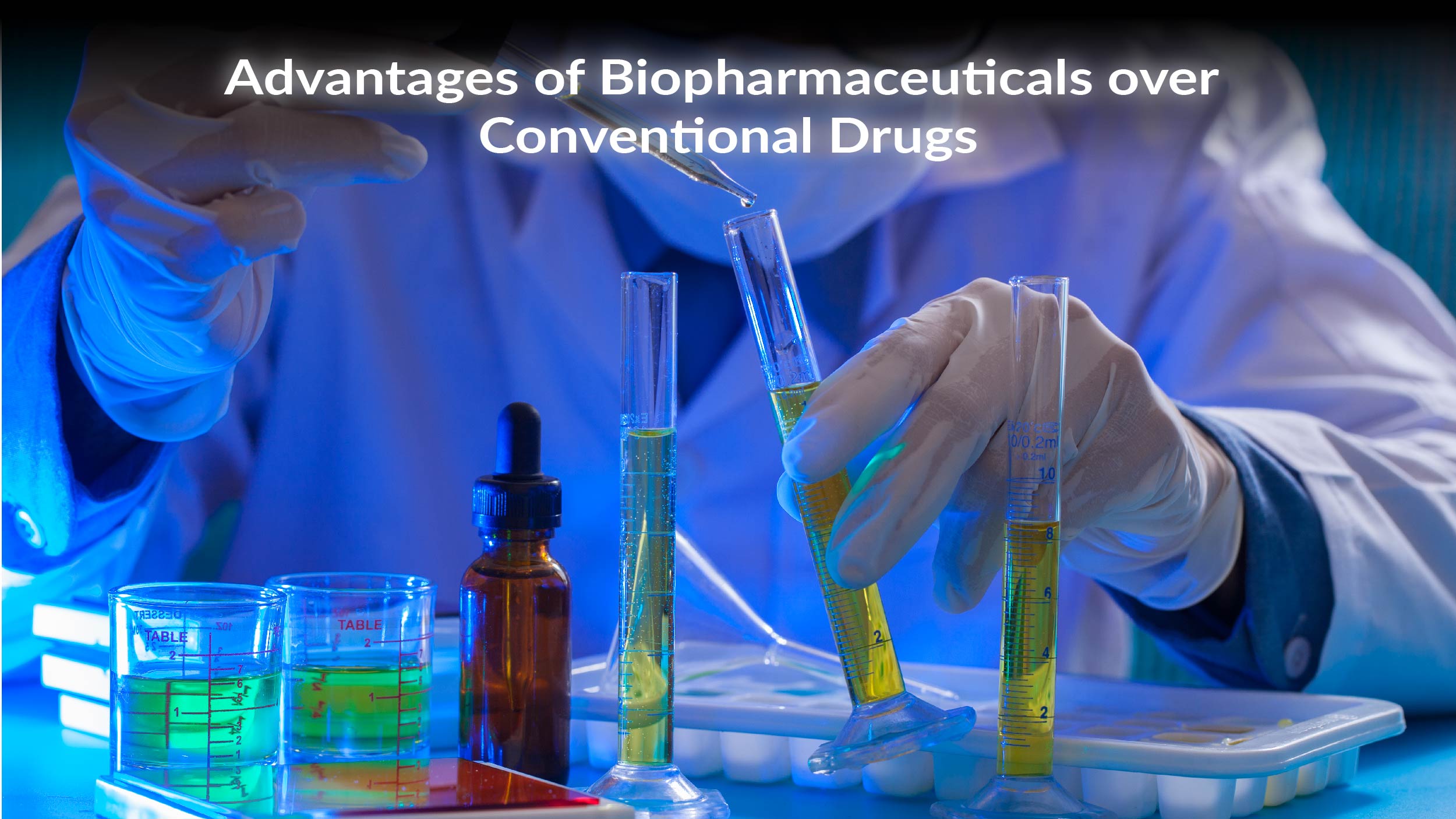Imagine a world where diseases could be cured more effectively, with fewer side effects and improved patient outcomes. Unfortunately, traditional pharmaceuticals often fall short of addressing these concerns. Patients endure the agony of prolonged treatments, experiencing adverse reactions, and yearning for a breakthrough solution. This is where biopharmaceuticals – a cutting-edge field that harnesses the power of biological molecules comes into play.
Biopharmaceuticals, also known as biological medical products, or biologics, are derived from living organisms such as cells, proteins, and nucleic acids. These innovative therapies offer a promising solution to the limitations of traditional pharmaceuticals, paving the way for a new era of personalized medicine.
What are Biopharmaceuticals?
Biopharmaceuticals are medicinal products produced by living organisms or their components. Unlike traditional drugs, which are chemically synthesized, biologics are derived from biological sources. This distinction allows these therapies to interact with the body in a more targeted and precise manner, leading to improved efficacy and reduced side effects.
What are the Four Categories of Biopharmaceutical Products?

The four main categories of biopharmaceutical products are:
- Monoclonal Antibodies (mAbs): These are laboratory-produced molecules engineered to mimic natural antibodies. They target specific antigens in the body and are used for treating various diseases, including cancer, autoimmune disorders, and infectious diseases.
- Recombinant Proteins: These are proteins produced through genetic engineering techniques, often using microbial or mammalian cells as production hosts. Recombinant proteins include hormones, enzymes, growth factors, and cytokines used for therapeutic purposes.
- Vaccines: Vaccines are biopharmaceutical products designed to stimulate the immune system to produce an immune response against specific pathogens, thereby providing immunity to diseases. They can be composed of inactivated or weakened forms of pathogens, as well as recombinant proteins or genetic material.
- Gene Therapies: Gene therapies involve the delivery of genetic material into cells to correct or modulate gene expression, treat genetic disorders, or induce therapeutic effects. This can be achieved using viral vectors, plasmid DNA, or RNA molecules to introduce therapeutic genes into target cells.
Key Characteristics and Differences from Traditional Pharmaceuticals
- Source and Production: Biologics originate from living organisms like cells, proteins, or nucleic acids, while traditional pharmaceuticals are typically chemically synthesized or extracted from chemical or plant-based compounds.
- Complexity: Biologics are usually large, intricate molecules, such as recombinant proteins or monoclonal antibodies, while traditional pharmaceuticals tend to be smaller molecules.
- Targeted Approach: Biologics are specifically tailored to target molecular mechanisms involved in diseases, offering more precise treatment. Traditional pharmaceuticals may have broader effects on the body.
- Efficacy and Safety: Biologics, due to their targeted nature, often provide improved efficacy and safety profiles compared to traditional drugs, with a reduced risk of adverse effects.
- Regulatory Approval: Both biopharmaceuticals and traditional pharmaceuticals undergo regulatory approval, such as from the FDA, before marketing. However, biologics may face specific regulatory considerations due to their unique characteristics.
- Research and Development: Biopharmaceutical development typically involves advanced techniques like genetic engineering, necessitating specialized expertise and infrastructure. Traditional pharmaceuticals may rely more on conventional drug discovery methods.
Also Read: Nanotechnology in Medicine: A Quantum Leap into the Future
Advantages of Biopharmaceuticals over Conventional Drugs

- Precision Targeting: Biologics are engineered to target specific molecular markers associated with particular diseases. This precision reduces the risk of adverse effects on healthy tissues, enhancing patient safety and tolerance.
- Reduced Side Effects: Unlike conventional drugs that can impact multiple bodily systems, biologics cause fewer side effects due to their targeted action. This focused approach minimizes harm to unaffected tissues, lowering the likelihood of additional unwanted reactions.
- High Selectivity and Activity: These demonstrate exceptional selectivity and potency compared to traditional medications. Their ability to interact precisely with specific molecules leads to enhanced therapeutic effects and improved patient responses.
- Structural Similarity: Biologics share structural similarities with compounds naturally occurring in the human body. This resemblance enables them not only to alleviate symptoms but also to address underlying disease mechanisms, potentially offering long-term cures.
- Personalized Medicine: The emergence of biologics aligns with the growing demand for personalized medical treatments. These therapies enable more tailored interventions, catering to the unique needs of individual patients.
- Advancements in Research: The biopharmaceutical field is undergoing rapid evolution, driven by ongoing research and development endeavors. Innovations in technologies like gene therapies and personalized medicine are expanding treatment options and enhancing patient outcomes.
Recent Advancements in Biopharmaceutical Research
The field of biopharmaceuticals has witnessed remarkable advancements in recent years. Researchers are continually exploring new techniques to optimize production processes, enhance drug delivery systems, and improve treatment regimens. Exciting breakthroughs, such as gene therapies and personalized medicine, have emerged, offering the potential to revolutionize the way diseases are treated. These advancements not only hold promise for patients but also drive the growth and innovation within the biopharmaceutical industry.
Are Biopharmaceuticals in High Demand?
The demand for biologics is rapidly increasing. As healthcare providers and patients become more aware of the benefits and potential of these therapies, there is a growing demand for personalized, targeted treatments. Biopharmaceuticals have demonstrated their value in treating complex diseases such as cancer, autoimmune disorders, and genetic conditions. Moreover, with an aging population and the rise of chronic diseases, the need for innovative therapies is more pressing than ever.
End Point
Biopharmaceuticals are transforming the landscape of healthcare by offering safer, more effective, and targeted treatments. With their unique characteristics and advantages over traditional pharmaceuticals, these innovative therapies hold tremendous potential for improving patient outcomes and revolutionizing the way diseases are managed. As research and development in the field continue to expand, the future of biologics shines bright, promising a new era of precision medicine and personalized care.



